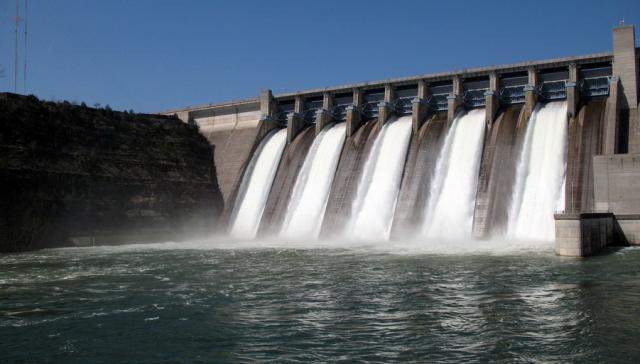Hydroelectric power is electricity that is supplied by generating energy from falling or streaming water. Hydroelectric power is a so-called renewable energy source. This means that the source, which provides the energy, can be renewed. This is because, unlike non-renewable energy sources such as crude oil, we will not run out of water fully. It can be renewed after we have used it for energy generation.
There are several benefits to the use of hydropower. Hydropower has a moderate to high amount of useful energy and fairly low operating and maintenance costs. Hydroelectric power plants emit very little heat-trapping carbon dioxide and other air pollutants during operation. They have live spans of two to ten times those of coal and nuclear plants.
The dams that are used in the power plants help prevent flooding and supply a regulated flow of irrigation water to the areas below the dam.
However, there are some drawbacks to the use of hydroelectric power. A hydroelectric power plant takes up a lot of space and this may cause animal habitats to go lost. Large-scale projects can threaten recreational activities and disrupt the flows of rivers. Due to the presence of dams and reservoirs, fish may not be able to swim to sea and aquatic life may decrease in the area of the hydroelectric power plant.
A hydroelectric power plant consists of a high dam that is built across a large river to create a reservoir, and a station where the process of energy conversion to electricity takes place.
The first step in the generation of energy in a hydropower plant is the collection of run-off of seasonal rain and snow in lakes, streams and rivers, during the hydrological cycle. The run-off flows to dams downstream. The water falls through a dam, into the hydropower plant and turns a large wheel called a turbine. The turbine converts the energy of falling water into mechanical energy to drive the generator. It turns a shaft, which rotates a number of magnets in the generator. When the magnets pass copper coils a magnetic field is created, which aids the production of electricity. Step-up transformers will than increase the voltage of the electricity, to levels needed for the journey to communities. After this process has taken place electricity is transferred to the communities through transmission lines and the water is released back into the lakes, streams or rivers. This is entirely not harmful, because no pollutants are added to the water while it flows through the hydropower plant.
Hydroelectric power supplies about 20% of the world's electricity, and 6% of its total commercial energy.
This is an indication of the total electricity supply by hydroelectric power in several different countries:
- 99% in Norway
- 75% in New Zealand
- 50% in developing countries
- 25% in China
- 13% in the USA
